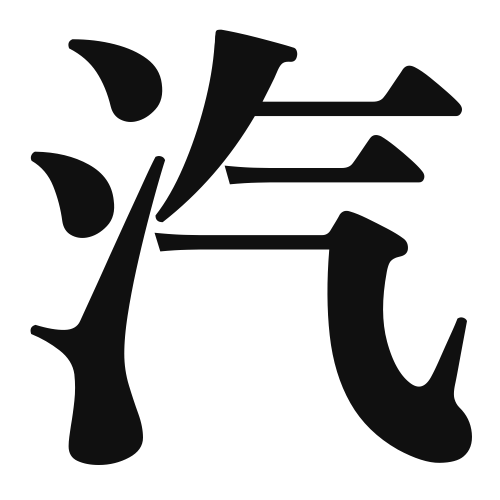1. Overview of Meaning
The kanji “汽” (ki) primarily means “steam” or “vapor.” It is often associated with steam engines and the concept of steam in general.
2. Formation and Radical
Formation of the Kanji: The kanji “汽” is a phonetic-ideographic character (形声文字). It combines the meaning of steam with phonetic elements to convey its sound and meaning.
Radical: The radical for “汽” is “水” (water), which is often associated with liquids and their properties.
3. Examples of Usage
Common Words and Phrases: Some frequently used words that include “汽” are:
- 汽車 (きしゃ, kisha) – steam train
- 汽笛 (きてき, kiteki) – steam whistle
Example Sentences in Daily Conversation:
- 「汽車に乗るのが好きです。」(きしゃにのるのがすきです。) – “I like riding on steam trains.”
- 「汽笛の音が聞こえます。」(きてきのおとがきこえます。) – “I can hear the sound of the steam whistle.”
4. Synonyms and Antonyms
Similar Kanji: A similar kanji is “霧” (きり, kiri), which means “fog.” While both relate to vapor, “霧” refers to a dense collection of water droplets in the air, whereas “汽” specifically refers to steam.
Antonyms: An antonym could be “氷” (こおり, koori), meaning “ice,” as it represents the solid state of water, contrasting with the gaseous state represented by “汽.”
5. Cultural and Historical Background
Relation to Japanese Culture: The concept of steam has played a significant role in Japan’s industrialization, particularly during the Meiji era when steam engines were introduced.
Proverbs and Idioms: One relevant idiom is “汽のように消える” (きのようにきえる, ki no you ni kieru), which means “to disappear like steam,” often used to describe something that vanishes quickly or unexpectedly.
